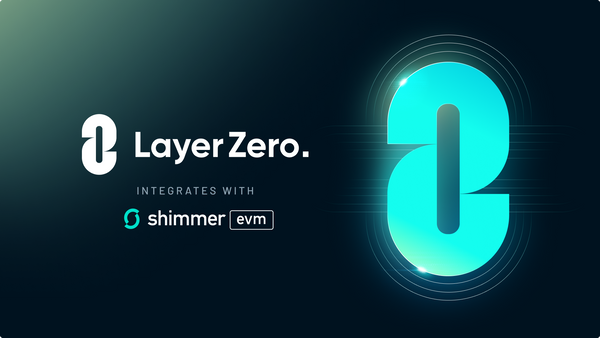DEX vs. CEX Part 1
Centralized Exchanges: Pros and Cons
TL;DR:
As the world of cryptocurrency continues to evolve, so does the way in which people buy and sell these digital assets. Two popular methods for trading crypto are centralized exchanges and decentralized exchanges. While both types of exchanges allow users to trade cryptocurrencies, they differ significantly in their structure and operation. Understanding the differences between these two types of exchanges is vitally important for anyone looking to invest in, trade with or build their own cryptocurrency.
Are you a crypto enthusiast wondering what the difference is between centralized and decentralized exchanges? Look no further, because in this article we'll explore the key distinctions between the two and why it matters for anyone using cryptocurrencies. While both types of exchanges allow you to buy and sell digital assets, the way they operate, their level of security, and the risks involved are vastly different.
So whether you're a seasoned trader or just getting started in the world of crypto, understanding the nuances of centralized versus decentralized exchanges is crucial to making informed investment decisions. Let's dive in!
Centralized exchanges
A centralized exchange (CEX) is run by a corporation: Coinbase or Binance for example. They generally have features that appeal to new crypto investors such as convenient fiat on-ramps and off-ramps, polished user interfaces, and customer service reps. Because they have the backing of corporations, they have the appearance of being trustworthy and they must indeed conform to local regulations. But because they are corporations they must also generate a profit and answer to their shareholders. Additionally, CEX platforms act as a third party between traders and their coins. Many of them take custody of your coins while you use the platform, and some of them might not even purchase the coins at all. Instead, they might generate an in-house ledger entry to account for your purchase without actually buying the coins in the first place.
For trading, most CEXs use the order book model. This is simply a two-sided ledger of bids and asks (buys and sells). The difference between the bid and ask price is known as the spread.
Trading on a CEX is generally through one of two methods: market orders and limit orders. When you place a market order, you’re willing to transact at whatever price your counterparty asks. If a coin has low liquidity and you want to buy a large position, you may have to buy up several offers, thereby clearing several orders to complete your transaction, which can affect your buying price. The advantage is that your order is filled immediately. Alternatively, when you place a limit order, you specify the price at which you wish to transact. Your order will remain open until a counterparty agrees to transact at your price and then the trade happens automatically. While this gives you confidence in the price you will pay, there is a chance that it could take a long time for your order to get filled, if at all.
Video: Shimmer Defi Education Session #2 by BanklessConsulting: Token Swaps Dex vs. Cex 15/09/22
Strengths and weaknesses of a CEX
The strengths of CEX include:
- Deep liquidity: Most CEXs will typically have plenty of asset buyers and sellers, so most orders can be completed quickly.
- Relationships with established market players: A CEX may run promotions with established market players that may offer special perks to users.
- Compliance with local regulations: Users can feel safe that, as a corporation, a CEX must comply with the latest local regulations.
- Over-the-counter trading: A CEX enables you to structure deals in a highly customized way. Using a trusted intermediary offers advantages when dealing with third parties or when placing large cryptocurrency orders.
- High-frequency trading: In many CEXs, you can connect to APIs, which allows transaction speeds limited only by network latency. In turn, this enables actions that aren’t possible on a decentralized exchange.
On the other hand, the weaknesses of a CEX include:
- Centralization: A centralized exchange means centralized leadership. The leadership is not only beholden to the local government but to the CEO and/or shareholders of the company. It has an obligation to make a profit, which usually comes from fees passed on to the users. Also, CEX infrastructure is hosted on web2 platforms, which are single points of failure.
- Custodial: Generally you don’t actually own your crypto assets when you make a deposit on a CEX. Instead, you own a legal IOU which is supported by the jurisdiction of the CEX. This means that you’re missing out on the core value proposition of blockchain: the ability to self-custody your own assets.
- Permissioned: Although it varies from one jurisdiction to the next, you will generally have to submit to a KYC ("Know Your Customer") process before opening a CEX account, which identifies you to the authorities. You’re also at the mercy of the CEX’s terms of service, and it can revoke your access at any time.
- Opaque execution: While some exchanges provide execution data about recent trades, it’s still a Web2 platform at its core. Ultimately, you must trust the data hosted on the CEX’s servers and, if you want to transact on its platform, you must have faith that this data is accurate. Recent headline-grabbing crises such as the collapse of Bahamas-based cryptocurrency exchange FTX are a reminder of the dangers inherent in a compromised and corrupt CEX.
In conclusion, centralized exchanges offer a range of benefits, such as ease of use, liquidity, and advanced trading features. However, they also have some drawbacks, including the potential for hacking, limited privacy, and a lack of control over your assets.
The good news is that decentralized exchanges offer a promising alternative. In the next article, we’ll explore the benefits and risks of using decentralized exchanges.
Whether you prefer the centralized or decentralized approach, the world of cryptocurrency offers a wealth of opportunities for traders and investors. Stay tuned for our next article, which will help you make an informed decision about which type of exchange is right for you.
Next: Decentralized Exchanges: Pros and Cons
Beginner's Guide to DEX vs. CEX
Part 1: Centralized Exchanges: Pros and Cons
Part 2: Decentralized Exchanges: Pros and Cons
Part 3: Mastering Decentralized Exchanges
Also in this series
Beginner's Guide to Crypto Wallets
Beginners Guide to DEX vs. CEX
Beginner's Guide to DeFi Lending & Borrowing
Beginner's Guide to Yield Farming
Follow us on our official channels for all the latest Shimmer news:
Discord | Twitter | LinkedIn | Reddit



